UPSC Daily Current Affairs- 9th August 2023 | Current Affairs & Hindu Analysis: Daily, Weekly & Monthly PDF Download
GS-I
Quit India Movement Day 2023
Subject: History and Culture
Why in News?
Every year Quit India Day is observed on August 8 to commemorate the occasion. This year marks the 81st anniversary of the event.
What is the Quit India Movement?
- The Quit India Movement, also known as the August Movement or Bharat Chodo Andolan, was a significant civil disobedience movement launched by Mahatma Gandhi and the Indian National Congress on August 8, 1942 at Gowalia Tank Maidan also known as August Kranti Maidan in Bombay.
- On this day, August 8th, in 1942, Gandhi gave the famous "Do or Die" speech, urging the Indian people to act decisively and nonviolently against British rule.
- Reasons:
- While factors leading to such a movement had been building up, matters came to a head with the failure of the Cripps Mission.
- The failure of the Cripps Mission made Gandhi realise that freedom would come only if Indians fought tooth and nail for it.
- The movement aimed to demand an end to British colonial rule in India and achieve full independence.
- Mass Protests:
- The movement saw widespread protests, strikes and acts of civil disobedience across the country.
- People participated in marches, demonstrations, and various forms of nonviolent resistance.
- Women played a vital role in the Quit India Movement, displaying immense courage and leadership.
- During the movement, parallel governments were set up in Ballia (Uttar Pradesh), Satara (Maharashtra), Tamluk (West Bengal), and Talcher (Odisha).
- Numerous arrests were made following the protest. Many top leaders of Congress, including Mahatma Gandhi, Jawaharlal Nehru and Sardar Vallabhbhai Patel, were also arrested.
Source: The Hindu
PMJAY registration- CAG reports 7.5 lakh recipients linked to single number
Subject: Social Issues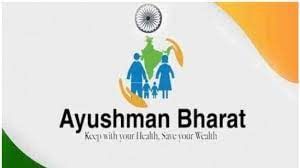
Why in News?
The Comptroller and Auditor General of India (CAG) has highlighted irregularities in registration and validation of beneficiaries under the Ayushman Bharat- Pradhan Mantri Jan Aarogya Yojana (PMJAY).
- In its audit report on Performance Audit of AB-PMJAY, tabled in Lok Sabha, the CAG said that overall, 7,49,820 beneficiaries were linked with a single mobile number in the Beneficiary Identification System (BIS) of the scheme.
Ayushman Bharat Pradhan Mantri Jan Arogya Yojana (AB-PMJAY)
- Launched in September 2018, the scheme aimed to offer secondary and tertiary care services to the vulnerable population in the society.
- It was launched as a second component of the ‘Ayushman Bharat’ scheme.
- This scheme aimed to offer medical coverage of Rs. 5 lakh per family per year for secondary and tertiary care hospitalisation to poor and vulnerable families.
Eligibility
- The scheme is targeted to cover 10.74 crore families (deprived rural families and identified occupational category of urban worker’s families)
- The beneficiaries are identified by latest Socio-Economic Caste Census (SECC) data.
Benefits
- It provides cashless access to health care services for the beneficiary at the point of service, i.e., the hospital.
- Rs 5 lakh Insurance coverage benefit per year offers Health Benefit Packages which covers surgery, medical and day care treatments, cost of medicines and diagnostics.
Role of National Health Authority (NHA)
- NHA is the apex body responsible for implementing Ayushman Bharat Pradhan Mantri Jan Arogya Yojana.
- It has been entrusted with the role of:
- designing strategy, building technological infrastructure and
- implementation of National Digital Health Mission to create a National Digital Health Eco-system.
- To implement the scheme at the State level, State Health Agencies (SHAs) in the form of a society/trust have been set up by respective States.
Achievements

News Summary: PMJAY registration- CAG reports 7.5 lakh recipients linked to single number
- In its audit report on Performance Audit of AB-PMJAY, the CAG has revealed that nearly 7.5 lakh beneficiaries were linked with a single cell phone number — 9999999999.
- The report stated that 7.87 crore beneficiary households were registered, constituting 73% of the targeted households of 10.74 crore (November 2022).
- Later, the government increased the target to 12 crore.

Key highlights of the report
- Significance of mobile number
- Mobile numbers are significant for searching records related to any beneficiary in the database, who may approach the registration desk without the ID.
- In case of loss of e-card, identification of the beneficiary may also become difficult.
- This may result in denial of scheme benefits to eligible beneficiaries as well as denial of pre- and post-admission communication causing inconvenience to them.
- Pointed out unrealistic household size for registered beneficiaries under PMJAY
- Data analysis revealed that in 43,197 households, the size of the family was unrealistic, ranging from 11 to 201 members.
- Presence of such unrealistic members in a household in the BIS database indicates:
- lack of essential validation controls in the beneficiary registration process, and
- the possibility that beneficiaries are taking advantage of the lack of a clear definition of family in the guidelines.
- The National Anti-Fraud Unit has sent periodic reminders to the States/UTs highlighting discrepancies in verified data.
- However, ‘Public Health’ being a State subject, the final decision in this regard vests with the State Governments
- Many pensioners found possessing PMJAY cards
- Many pensioners in Chandigarh, Haryana, Himachal Pradesh, Karnataka, Maharashtra and Tamil Nadu were found possessing PMJAY cards and availing treatment under the scheme.
- Delayed action in weeding out the ineligible beneficiaries
- Audit observed that delayed action in weeding out the ineligible beneficiaries resulted in ineligible persons availing benefits of the Scheme and excess payment of premium to the insurance companies.
Source: Indian Express
Shree Jagannath Temple in Puri
Subject: History and Culture
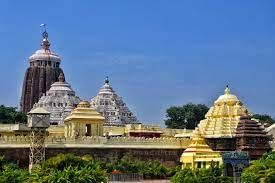
Why in News?
The Archaeological Survey of India (ASI) has sought permission to inspect the inner chamber of the Ratna Bhandar (treasury) of the Shree Jagannath Temple in Puri.
Background:
- About 1.2 quintal of gold jewellery is stocked in the Ratna Bhandar
- The previous inventory of the jewellery in the Ratna Bhandar was carried out in 1978.
About Puro Jagannath Temple:
- The Shree Jagannath Temple of Puri is an important Hindu temple dedicated to Lord Jagannath, a form of Vishnu,in Puri in the state of Odisha on the eastern coast of India.
- The present temple was rebuilt from the 10th century onwards, on the site of an earlier temple, by King Anantavarman Chodaganga Deva, first of the Eastern Ganga dynasty.
- The Jagannath Temple in Puri is called the “White Pagoda”.
- The temple is a part of Char Dham (Badrinath, Dwaraka, Puri, Rameswaram) pilgrimages that a Hindu is expected to make in one’s lifetime.
- The Puri temple is famous for its Annual Ratha yatra, or chariot festival, in which the three principal deities are pulled on huge and elaborately decorated temple cars.
- These gave their name to the English term Juggernaut.
- Unlike the stone and metal icons found in most Hindu temples, the image of Jagannath is made of wood and is ceremoniously replaced every twelve or nineteen years by an exact replica.
Architecture of Jagannath temple:
- The temple is built in the Kalinga style of architecture, with the Pancharatha (Five chariots) type consisting of two anurathas, two konakas and one ratha.
- Jagannath temple is a pancharatha with well-developed pagas.
- ‘Gajasimhas’ (elephant lions)carved in recesses of the pagas, the ‘Jhampasimhas’ (Jumping lions) are also placed properly.
- The perfect pancharatha temple developed into a Nagara-rekha temple.
- The temple is built on an elevated platform, as compared to Lingaraja temple and other temples belonging to this type.
- This is the first temple in the history of Kalingaan temple architecturewhere all the chambers like Jagamohana, Bhogamandapa and Natyamandapa were built along with the main temple.
- There are miniature shrines on the three outer sides of the main temple.
Archaeological Survey of India:
- The ASI is the premier organization for the archaeological researches and protection of the cultural heritage of the country.
- The prime objection of ASI is to maintain the archaeological sites, ancient monuments, and remains of national importance.
- Headquarters: New Delhi.
- Established: 1861 by Alexander Cunningham.
- It regulates all archaeological activities as per the provisions of the Ancient Monuments and Archaeological Sites and Remains Act, 1958.
- It functions under the aegis of the Union Ministry of Culture.
- It also regulates Antiquities and Art Treasure Act, 1972.
Source: The Hindu
GS-II
Organ Donation in India
Subject: Polity and Governance
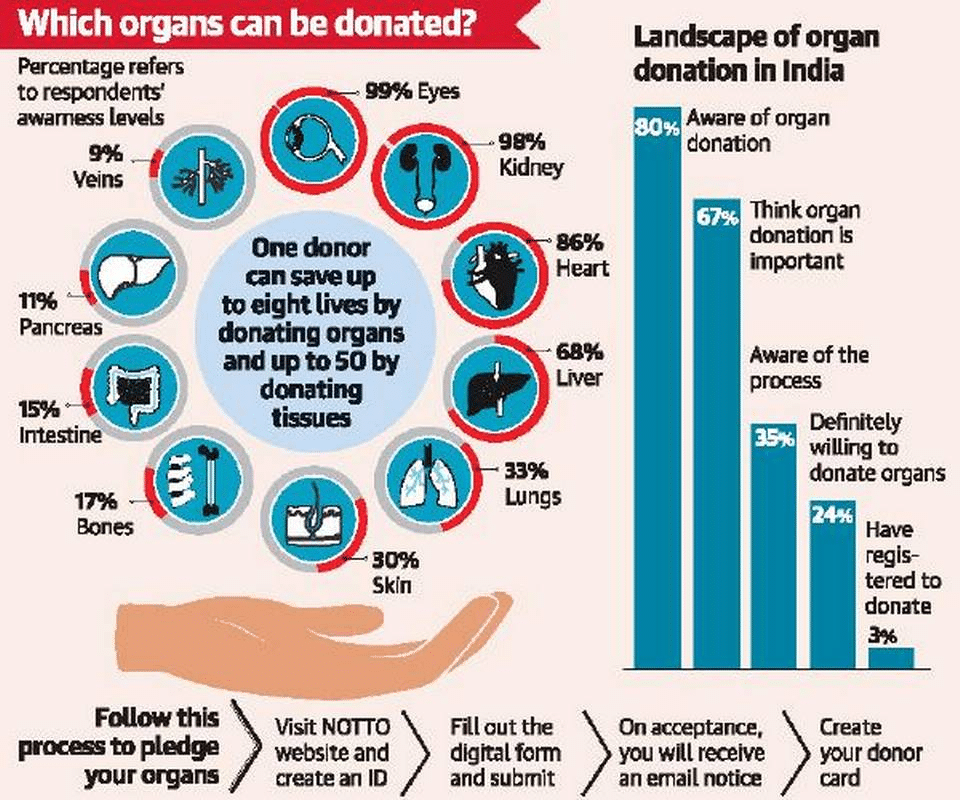
Why in News?
Recently, the critical shortage of organ donations, particularly deceased donations, has led to a dire situation in India, with thousands of patients waiting for transplants and a significant number losing their lives daily.
- The Ministry of Health and Family Welfare has earlier modified National Organ Transplantation Guidelines, allowing those above 65 years of age to receive an organ for transplantation from deceased donors.
- In India, the Transplantation of Human Organs Act, 1994 provides various regulations for the removal of human organs and their storage. It also regulates the transplantation of human organs for therapeutic purposes and for the prevention of commercial dealings in human organs.
What is the Status of Organ Donation in India?
- Growing Demand and Persistent Shortage:
- Over 300,000 patients are on the waiting list for organ donations in India.
- The supply of organ donors has not kept up with the increasing demand.
- Approximately 20 individuals die daily while awaiting organ transplants due to the shortage.
- Slow Growth in Donor Numbers:
- Donor numbers, including both living and deceased, have shown slow growth over the years.
- From 6,916 donors in 2014, the count increased to about 16,041 in 2022, indicating a modest rise.
- The deceased organ donation rate in India has remained consistently below one donor per million population for a decade.
- Deceased Organ Donation Rate:
- Urgent efforts are required to raise the deceased organ donation rate to address the shortage.
- Countries like Spain and the United States have achieved significantly higher donation rates, ranging from 30 to 50 donors per million population.
- Prevalence of Living Donors:
- Living donors constitute the majority, accounting for 85% of all donors in India.
- However, deceased organ donations, especially for kidneys, liver, and heart, remain considerably low.
- Regional Disparities:
- Disparities in organ donation rates exist among different states in India.
- Telangana, Tamil Nadu, Karnataka, Gujarat, and Maharashtra have reported the highest number of deceased organ donors.
- Delhi-NCR, Tamil Nadu, Kerala, Maharashtra, and West Bengal are prominent regions with a high number of living donors.
- Kidney Transplants:
- Kidney transplantation in India faces a significant disparity between demand and supply.
- Annual demand for 200,000 kidney transplants is met with only around 10,000 transplants each year, creating a substantial gap.
What are the Challenges Regarding Organ Donation?
- Lack of Awareness and Education:
- Limited awareness among the general public about organ donation and its impact.
- Insufficient education among medical professionals to identify potential donors and counsel families effectively.
- Family Consent and Decision-Making:
- Family reluctance to give consent for organ donation, even when the deceased individual had expressed a willingness to donate.
- Emotional and ethical dilemmas that families face when making decisions about organ donation.
- Organ Trafficking and Black Market:
- Illegal organ trafficking and the existence of a black market for organs.
- Criminal activities exploiting the demand for organs and undermining legitimate donation processes.
- Medical Eligibility and Compatibility:
- Matching suitable donors and recipients based on medical compatibility and organ availability.
- Limited availability of compatible organs, leading to prolonged waiting periods for patients.
- Donor Incentives and Compensation:
- Debates over the ethical implications of offering financial incentives or compensation to organ donors.
- Balancing the need for increasing donation rates with ensuring ethical practices.
- Infrastructure and Logistics:
- Inadequate infrastructure and resources for organ retrieval, preservation, and transplantation.
- Challenges in the timely transportation of organs from donors to recipients, especially across different regions.
Way Forward
- Partner with artists, influencers, and celebrities to create impactful campaigns highlighting organ donation's significance.
- Organize seminars for medical professionals, employing interactive simulations and case studies for donor identification and family counseling.
- Collaborate with educational institutions to raise awareness among students about organ donation through workshops and talks.
- Host community-driven events that showcase the success stories of organ recipients and donors.
- Engage religious leaders to debunk myths and misconceptions about organ donation, emphasizing its compassionate aspect.
- Introduce a program to honour donors and their families, recognizing their selfless contribution through plaques and certificates.
- Foster collaborations between healthcare institutions to optimize organ transplantation processes for efficient outcomes.
- Promote the idea of organ donation as a selfless act of compassion and empathy.
Source: The Hindu
National Disaster Management Authority (NDMA)
Subject: Polity and Governance
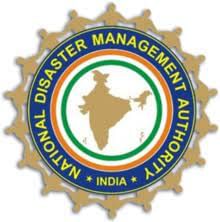
Why in News?
The National Disaster Management Authority (NDMA) recently informed that several states and Union territories (UTs) are yet to implement the Incident Response System (IRS), which is crucial for disaster response.
About Incident Response System (IRS):
- IRS is a combination of facilities, equipment, personnel, procedure and communications operating within a common organizational structure, with responsibility for the management of assigned resources to effectively accomplish stated objectives pertaining to an incident.
Functions of IRS:
- In line with administrative structure and DM Act 2005, Responsible Officer (RO) is designated at the State and District level as overall in charge of the incident response management.
- RO may delegate responsibilities to the Incident Commander (IC), who in turn will lead/manage the incident through Incident Response Teams (IRTs).
- IRS functions through Incident Response Teams (IRTs) in the field. An IRT is a team comprising all positions of IRS organization; headed by Incident Commander (IC).
- On receipt of Early Warning, RO activates IRTs.
- In case of a disaster without any warning, local IRT will respond and contact RO for further support, if required.
- IRTs pre-designated at all levels, i.e. State, District, Sub-Division and Tehsil/Block.
- IRT’s lowest administrative unit (Sub-Division / Tehsil / Block) will be the ‘first responder’.
- If the incident becomes complex and beyond the control of local IRT, higher level IRT will be informed / take over the response management.
- In such cases the lower level IRT will merge with the higher level IRT.
- When lower level of IRT merges with a higher level, IC of lower level may play the role of Deputy IC or Operations Sections Chief (OSC) or any other duty that the IC of higher authority assigns.
Source: Hindustan Times
GS-III
Central Armed Police Force – Role, Responsibilities & Challenges
Subject: Defence and Security
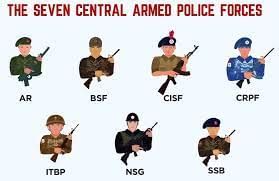
Why in News?
According to data provided by the Ministry of Home Affairs (MHA) to Parliament recently, 432 personnel of the Central Armed Police Force (CAPF) died by suicide in the last three years.
About Central Armed Police Force (CAPF):
- Central Armed Police Forces is the collective name of central police organizations in India under the authority of Ministry of Home Affairs.
- These are technically paramilitary forces formerly known as “Central Para-Military Forces (CPMF)”.
- Since 2011, India adopted the term "Central Armed Police Forces" to drop the word "paramilitary".
- These forces are responsible for internal security and guarding the borders.
Classification of CAPF:
- The Central Armed Police Forces refers to seven security forces, all functioning under the authority of Ministry of Home Affairs.
- These seven security forces are –
- Assam Rifles (AR)
- Border Security Force (BSF)
- Central Industrial Security Force (CISF)
- Central Reserve Police Force (CRPF)
- Indo Tibetan Border Police (ITBP)
- National Security Guard (NSG)
- Sashastra Seema Bal (SSB)
- Each of the seven has its own cadre of officers, but they are headed by officers of the Indian Police Service.
About Assam Rifles:
- The Assam Rifles is a central police and paramilitary organisation responsible for border security, counter-insurgency, and law and order in Northeast India.
- Its primary role is to guard the 1,643-kilometre-long Indo-Myanmar border.
- The AR comes under the administration of the Ministry of Home Affairs (MHA), while its operational control is maintained by the Indian Army.
- The AR is often nicknamed "Sentinels of the North East" and "Friends of the Hill People".
- It is the oldest paramilitary force in India.
About Border Security Force (BSF):
- The primary role of the Border Security Force is to guard the Indo-Pakistan and Indo-Bangladesh borders, it is deployed both on the international border and the Line of Control (LOC).
- The BSF has air wing, marine wing, an artillery regiment, and commando units.
- It currently stands as the world's largest border guarding force.
- BSF has been termed as the First Line of Defence of Indian Territories.
About Central Industrial Security Force (CISF):
- The Central Industrial Security Force came into existence in 1969 to provide integrated security cover to certain sensitive public sector undertakings.
- The CISF security umbrella includes India’s most critical infrastructure facilities like nuclear installations, space establishments, airports, seaports, power plants etc.
About Central Reserve Police Force (CRPF):
- The CRPF's primary role lies in assisting the State/Union Territories in police operations to maintain law and order and counter-insurgency.
- The Central Reserve Police includes:
- The Rapid Action Force (RAF), a 15-battalion anti-riot force trained to respond to sectarian violence.
- The Commando Battalion for Resolute Action (COBRA), a 10-battalion strong anti-Naxalite/COIN force.
- It came into existence as the Crown Representative's Police in 1939.
- Besides law and order and counter-insurgency duties, the CRPF has played an increasingly large role in India's general elections.
About Indo Tibetan Border Police (ITBP):
- The Indo Tibetan Border Police was established in 1962 in the aftermath of the Indo-China war.
- The ITBP is deployed for guarding duties on the Indo-China border from Karakoram Pass in Ladakh to Diphu Pass in Arunachal Pradesh covering a total distance of 3,488 km.
- It is a specialized mountain force and most of the officers and men are professionally trained mountaineers and skiers.
About National Security Guard (NSG):
- The National Security Guard (NSG), commonly known as Black Cats, is a counter-terrorism unit.
- It was founded under the National Security Guard Act, 1986.
- It was founded following Operation Blue Star, for combating terrorist activities and protect states against internal disturbances.
About Sashastra Seema Bal (SSB):
- Sashastra Seema Bal is a border guarding force of India deployed along its borders with Nepal and Bhutan.
- The force was originally set up under the name Special Service Bureau in 1963 in the aftermath of the Indo-China War to strengthen India's border areas against enemy operations.
Challenges, along with Suggestions, Faced by the CAPF in India:
- The Committee on Estimates, chaired by Murli Manohar Joshi, had submitted its report on ‘Central Armed Police Forces and Internal Security Challenges – Evaluation and Response Mechanism’ in March, 2018.
- Deployment of CAPFs –
- The Committee observed that there was heavy dependence of states on central armed police forces (CAPFs), even for everyday law and order issues.
- This was likely to affect the anti-insurgency and border guarding operations, besides curtailing the training needs of these forces.
- The Committee recommended that states must develop their own systems, and augment their police forces by providing adequate training and equipment.
- Training of CAPFs –
- The Committee observed that there was heavy dependence of states on CAPFs, even for everyday law and order issues.
- This was likely to affect the anti-insurgency and border guarding operations, besides curtailing the training needs of these forces.
- The Committee recommended that states must develop their own systems, and augment their police forces by providing adequate training and equipment.
- Modernizing of CAPFs –
- The Modernization Plan II (2012-17), approved by the Cabinet Committee on Security, aims at providing financial support to CAPFs for modernizing arms, clothing, and equipment.
- However, the Committee observed that the procurement process under the Plan was cumbersome and time consuming.
- The committee recommended that bottlenecks in procurement should be identified and corrective action taken.
- Further, the Ministry of Home Affairs and CAPFs should hold negotiations with ordnance factories and manufacturers in public or private sector to ensure uninterrupted supply of equipment and other infrastructure.
- Stress among CAPF Personnel –
- According to data provided by the Ministry of Home Affairs (MHA) to Parliament recently, 432 personnel of the CAPF died by suicide in the last three years. Overall, 1,532 personnel died by suicide since 2011.
- In April 2023, the MHA had informed the Lok Sabha that the causative factors in most cases of fratricide in the CAPFs are generally –
- personal and domestic problems, family issues, depression and work-related issues.
- The Committee emphasized the need of accommodation near the deployment of the respective force, to enable personnel to meet their family members.
- Youth in Jammu & Kashmir –
- The Committee noted that there was an urgent need to engage with the youth in Jammu and Kashmir, to bring them into the mainstream.
- The central government has introduced schemes to increase employability of youth in Jammu and Kashmir, including Udaan and Himayat.
- The Committee recommended that the impact of these schemes needs to be evaluated by the central and state governments.
Source: The Print
Inter-Services Organisation (Command, Control & Discipline) Bill 2023
Subject: Defence and Security
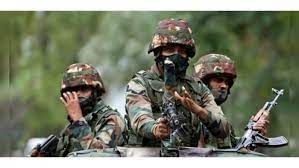
Why in News?
What is the Inter-Services Organisation (Command, Control & Discipline) Bill 2023?Lok Sabha recently passed the Inter-Services Organisation (Command, Control & Discipline) Bill - 2023 with the aim to bolster the efficiency, discipline, and jointness among the Armed Forces.
- Background: :
- Currently, the Armed Forces operate under distinct Service Acts – the Army Act 1950, Navy Act 1957, and Air Force Act 1950.
- However, the diverse nature of these acts has sometimes posed challenges in maintaining uniform discipline, coordination, and expeditious proceedings across the inter-services establishments.
- The Inter-Services Organisation (Command, Control, & Discipline) Bill - 2023, addresses these concerns with its forward-looking provisions.
- ISO Bill 2023 does not propose any alteration to the existing Service Acts, Rules, or Regulations that have stood the test of time and judicial scrutiny over several decades.
- Salient Features:
- Applicability: The bill is applicable to all regular Army, Navy, and Air Force personnel.
- Also, the central government holds the right to designate any force established and maintained within India to which the provisions of the bill will apply.
- Inter-services Organisation: Existing Inter-services Organisations will be deemed to have been constituted under the Bill. These include the Andaman and Nicobar Command, the Defence Space Agency, and the National Defence Academy.
- The central government may constitute an Inter-services Organisation which has personnel belonging to at least two of the three services: the army, the navy, and the air force.
- Expanded Command and Control Authority: One of the central tenets of the bill is the extension of command and control authority to the Commander-in-Chief or Officer-in-Command of an Inter-services Organisation.
- Unlike the existing structure, where these officers lack disciplinary and administrative powers over personnel from other services, the bill empowers them to exercise full command and control.
- This includes maintaining discipline and ensuring the proper execution of duties by service personnel.
- Commanding Officer: The bill introduces the concept of a Commanding Officer, responsible for overseeing a unit, ship, or establishment.
- This officer, in addition to their unit-specific duties, also carries out tasks assigned by the Commander-in-Chief or Officer-in-Command of the Inter-services Organisation.
- Central Government Authority: The superintendence of an Inter-services Organisation will be vested in the central government.
- The government may also issue directions to such organizations on grounds of national security, general administration, or public interest.
- Applicability: The bill is applicable to all regular Army, Navy, and Air Force personnel.
Source: Economic Times
|
38 videos|5288 docs|1117 tests
|
















